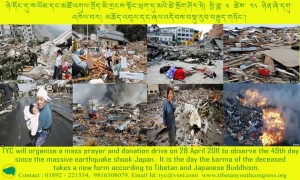Pflanzen&Gewürze
Indigenous Food Festival Chiang Mai, Thailand
SAVING BIODIVERSITY & RIGHT TO FOOD: www.srfood.org www.cbd.int/cop10
NEW Campaign against seeds privatization www.foodsov.org/html/takeaction.htm
IKAP THAILAND NETWORK www.ikap-mmsea.org: Indigenous Food Festival Chiang Mai, Thailand
Documents developed by this network are: National Laws on Indigenous Knowledge and Biodiversity and Rotational Farming.
Climate Change, Food Sovereignty & Security
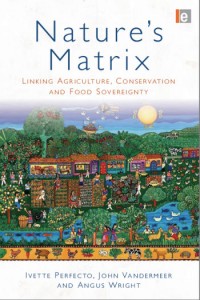
www.oneclimate.net Food security refers to the availability of food and one’s access to it. A household is considered food-secure when its occupants do not live in hunger or fear of starvation. According to the World Resources Institute, global per capita food production has been increasing substantially for the past several decades. In 2006, MSNBC reported that globally, the number of people who are overweight has surpassed the number who are undernourished – the world had more than one billion people who were overweight, and an estimated 800 million who were undernourished. According to a 2004 article from the BBC, China, the world’s most populous country, is suffering from an obesity epidemic. In India, the second-most populous country in the world, 30 million people have been added to the ranks of the hungry since the mid-1990s and 46% of children are underweight.
www.1billionhungry.org Worldwide around 852 million people are chronically hungry due to extreme poverty, while up to 2 billion people lack food security intermittently due to varying degrees of poverty (source: FAO, 2003). Six million children die of hunger every year – 17,000 every day. As of late 2007, export restrictions and panic buying, US Dollar Depreciation,increased farming for use in biofuelsworld oil prices at more than $100 a barrel, global population growth,climate change,loss of agricultural land to residential and industrial development,and growing consumer demand in China and Indiaare claimed to have pushed up the price of grain. However, Nonetheless, food riots have recently taken place in many countries across the world. Read More: > HERE <
As the Nobel Prize-winning economist Amartya Sen has observed that „there is no such thing as an apolitical food problem.“ While drought and other naturally occurring events may trigger famine conditions, it is government action or inaction that determines its severity, and often even whether or not a famine will occur. The 20th century is full of examples of governments undermining the food security of their own nations–sometimes intentionally.
There are many economic approaches advocated to improve food security in developing countries. Three typical approaches are listed below, click here . The first is typical of what is advocated by most governments and international agencies. The other two are more common to non-governmental organizations (NGO’s).
The third approach is known as food sovereignty; though it overlaps with food justice on several points, the two are not identical. It views the business practices of multinational corporations as a form of neocolonialism click here.
It contends that multinational corporations have the financial resources available to buy up the agricultural resources of impoverished nations, particularly in the tropics. They also have the political clout to convert these resources to the exclusive production of cash crops click here ,for sale to industrialized nations outside of the tropics, and in the process to squeeze the poor off of the more productive lands. Under this view subsistence farmers are left to cultivate only lands that are so marginal in terms of productivity as to be of no interest to the multinational corporations. Likewise, food sovereignty holds it to be true that communities should be able to define their own means of production and that food is a basic human right.
With several multinational corporations now pushing agricultural technologies on developing countries, technologies that include improved seeds, chemical fertilizers, and pesticides, crop production has become an increasingly analyzed and debated issue. Many communities calling for food sovereignty are protesting the imposition of Western technologies on to their indigenous systems and agency.
Those who hold a „food sovereignty“ position advocate banning the production of most cash crops in developing nations, thereby leaving the local farmers to concentrate on subsistence agriculture. In addition, they oppose allowing low-cost subsidized food from industrialized nations into developing countries, what is referred to as „import dumping“. Import dumping also happens by way of food aid distribution through programs like the USA’s „Food for Peace“ initiative.
www.fao.org , www.vandanashiva.org Vandana Shiva (Hindi: वन्दना शिवा; b. November 5, 1952, Dehra Dun, Uttarakhand, India), is a philosopher, environmental activist, eco feminist and author of several books. Shiva, currently based in Delhi, is author of over 300 papers in leading scientific and technical journals. She received her Ph.D. in philosophy from the University of Western Ontario, Canada, in 1978 with the doctoral dissertation:“Hidden variables and locality in quantum theory. Read More: > HERE < , Food Commodities Speculation and Food Price Crises http://www.srfood.org
Food Security Guide – Over one billion people experience the hardship that hunger imposes, a figure which continues to rise even amidst the riches of the 21st century. Engulfed within a vortex of population growth, economic instability and climate change, food security has become an urgent challenge for national and global governance. However, the feeble outcome of the 2009 World Summit on Food Security suggests that the richer countries are not yet ready to reorganise their dysfunctional priorities. http://uk.oneworld.net/guides/food
WASHINGTON (MarketWatch) — Those of us who believe that the economy should serve us instead of the other way around are conflicted. We know that the only way to end unemployment at home and poverty around the world is to make the economy grow faster. But we also know that nothing can grow forever, that the faster the global economy grows, the sooner we’ll run out of essential resources, including fossil fuels, water, arable land, healthy ecosystems and moderate climate. Economists and politicians can’t admit it, but the laws of physics apply, no matter what the latest polls tell us. The Earth has finite resources that will someday limit our economic growth.
The Earth cannot forever support 7 billion people consuming as much as Americans consume. And yet we’ve staked our future — individually, nationally, and maybe even as a species — on that impossible dream.
SOLUTIONS – Prosperity Without Growth, Professor Tim Jackson: Growth has delivered its benefits, at best, unequally. A fifth of the world’s population earns just 2% of global income. Inequality is higher in the OECD nations than it was 20 years ago. And while the rich got richer, middle-class incomes in Western countries were stagnant in real terms long before the recession. Far from raising the living standard for those who most needed it, growth let much of the world’s population down. Wealth trickled up to the lucky few.
Accordingly, this report sets out a critical examination of the relationship between prosperity and growth. It acknowledges at the outset that poorer nations stand in urgent need of economic development. But it also questions whether ever-rising incomes for the already-rich are an appropriate goal for policy in a world constrained by ecological limits. Its aim is not just to analyse the dynamics of an emerging ecological crisis that is likely to dwarf the existing economic crisis. But also to put forward coherent policy proposals that will facilitate the transition to a sustainable economy. In short, this report challenges the assumption of continued economic expansion in rich countries and asks: is it possible to achieve prosperity without growth?
In short, a ‘green stimulus’ is an eminently sensible response to the economic crisis. It offers jobs and economic recovery in the short term, energy security and technological innovation in the medium term, and a sustainable future for our children in the long term. Nonetheless, the default assumption of even the ‘greenest’ Keynesian stimulus is to return the economy to a condition of continuing consumption growth. Since this condition is unsustainable, it is difficult to escape the conclusion that in the longer term something more is needed. A different kind of macro-economic structure is essential for an ecologically-constrained world.
The above is an excerpt www.ecobuddhism.org : The full report can be downloaded here .
Available in PDF: New briefing: Food safety for whom? Corporate wealth versus people’s health by GRAIN, May 2011, further informations: www.corpwatch.org
A new briefing by GRAIN examines how „food safety“ is being used as a tool to increase corporate control over food and agriculture, and discusses what people can do and are doing about it. Below is a snapshot of what’s inside. The full briefing is available here.
View some additional photos here.
Relay Hunger Strike to Kirti Gompa
Kirti Gompa (Tibetan: ཀིརྟི་དགོན་པ།), (sometimes referred to as Ge’erdengsi or Gerdeng Monastery), properly known as Kirti Kalari Gon Tashi Lhundrub, is a Gelugpa monastery on the northwestern edge of Ngawa City, the main city in Ngawa County, within the Ngawa Tibetan and Qiang Autonomous Prefecture in northwestern Sichuan, China. It is located on the Tibetan plateau at an elevation of 3,200 metres (10,499 ft.) Read More: > HERE <
The Fukushima I nuclear accidents (福島第ä��原子力発電所ä��故, Fukushima Dai-ichi are a series of ongoing equipment failures and releases of radioactive materials at the Fukushima I Nuclear Power Plant, following the 9.0 magnitude Tōhoku earthquake and tsunami on 11 March 2011.The plant comprises six separate boiling water reactors maintained by the Tokyo Electric Power Company (TEPCO). This accident is the largest of the 2011 Japanese nuclear accidents arising from the Tōhoku earthquake and tsunami, and experts consider it to be the second largest nuclear accident after the Chernobyl disaster, but more complex as all reactors are involved. Read more: > HERE <
TYC will organise a mass prayer and donation drive on 28th April 2011 to observe the 49th day since the massive earthquake shook Japan.
Relay Hunger Strike to demand immediate withdrawal of Chinese troops from Kirti Monastery in Tibet – TYC launched today indefinite Relay Hunger Strike near Main Temple (Tsuklagkhang) to protest against the critical situation in and around Kirti Monastery in Ngaba, Tibet. 15 monks from Institute of Buddhist Dialectics today participated in the first batch of hunger strike. We are also collecting signatures at the site on the petition demanding immediate withdrawal of Chinese troops. All Regional chapters of TYC has also been instructed to launch relay hunger strike. Please see the statement on this campaign.
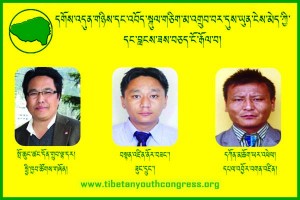
www.studentsforafreetibet.org against Chinas „Re – Education Programme“ and for Human Rights 4 All
- www.tibetoralhistory.org
- Save Mountain Minorities, Tibetan Nomads, Indigenous People <
- www.uranium-network.org www.minesandcommunities.org
- http://stopminingtibet.com www.meltdownintibet.com
- Nuclear Safety: http://www.barentsobserver.com/index.php?cat=156838
- IPPNW Int. Physicans to prevent Nuclear War at fb <
- Meet International friends of Tibetan Youth Congress at fb <
- Meet Students for a free Tibet at fb <
- http://www.amnesty.org/en/economic-social-and-cultural-rights <
- Meet Human Rights Watch International at fb <
CONFERENCE: The City of Kashgar
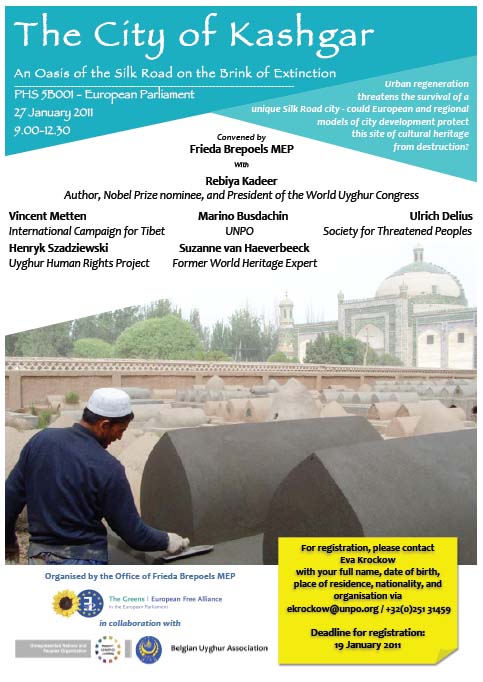
www.rferl.org Radio Free Europe
The Silk Road (or Silk Routes) is an extensive interconnected network of trade routes across the Asian continent connecting East, South, and Western Asia with the Mediterranean world, as well as North and Northeast Africa and Europe. In recent years, both the maritime and overland Silk Routes are again being used, often closely following the ancient routes.Read More: > HERE <
The Uyghur (Uyghur: ئۇيغۇر, ULY: Uyghur; simplified Chinese: 维吾尔; traditional Chinese: 維吾爾) are a Turkic ethnic group living in Eastern and Central Asia. Today, Uyghurs live primarily in the Xinjiang Uyghur Autonomous Region in the People’s Republic of China. An estimated 80% of Xinjiang’s Uyghurs live in the southwestern portion of the region, the Tarim Basin. The largest community of Uyghurs outside Xinjiang in China is in Taoyuan County, in south-central Hunan province.Outside of China, large diasporic communities of Uyghurs exist in the Central Asian countries of Kazakhstan, Kyrgyzstan, and UzbekistanSmaller communities are found in major cities in Afghanistan, Pakistan, and Turkey. Read More: > HERE <
The City of Kashgar: An Oasis of the Silk Road on the Brink of Extinction – Two years into Beijing’s ‘Kashgar Dangerous House Reform’, and the Old City of Kashgar in East Turkestan, or China’s Xinjiang Uyghur Autonomous Region (XUAR), faces near total destruction.
There is a pressing need to assess the damage incurred, implications for the region’s Uyghur population, and to identify ways in which damage can be mitigated.
To address this urgent need, Ms Frieda Brepoels MEP will convene a conference, ‘Kashgar: An Oasis of the Silk Road on the Brink of Extinction’ at the European Parliament in Brussels from 9.00–12.30 on 27 January 2011 in collaboration with the Unrepresented Nations and Peoples Organization (UNPO) and the Belgian Uyghur Association. For more information on the event please refer to http://www.unpo.org/article/12104
After opening remarks by Rebiya Kadeer, Nobel Peace Prize nominee and President of the World Uyghur Congress, international experts including Henryk Szadziewski, Manager of the Uyghur Human Rights Project, Washington, and Ulrich Delius, German Society for Threatened Peoples, will provide a rare glimpse into one of the defining cultures of Central Asia and an internationally significant Silk Road city that has witnessed Tamerlane, Genghis Khan and Marco Polo but is excluded from applications for UNESCO World Heritage status due to political reasons.
In the keynote address for the Oslo Freedom Forum 2010, Uyghur leader Rebiya Kadeer reveals the plight of her people under the repressive Chinese government. Like the Tibetans, the Uyghurs are living in an open prison, forced to abandon their culture, subjected to torture, imprisonment, and execution for speaking out.
Drawing on the historical lessons taught by the international case studies of Lhasa and Bruges, Vincent Metten, EU Policy Director of the International Campaign for Tibet, and Suzanne van Haeverbeek, former Flemish world heritage expert, will discuss how international intervention may prevent Kashgar’s further destruction and avoid the total and irreversible loss of a unique site of cultural and architectural heritage.
www.wsk.at Vienna Boy´s Choir www.uyghurensemble.co.uk
Africa – Green Agriculture & Climate Change
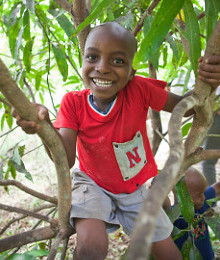
http://kofiannanfoundation.org
Sustainable agriculture is the practice of farming using principles of ecology, the study of relationships between organisms and their environment. It has been defined as „an integrated system of plant and animal production practices having a site-specific application that will, over the long term:Satisfy human food and fiber needs Make the most efficient use of non-renewable resources and on-farm resources and integrate, where appropriate, natural biological cycles and controls Sustain the economic viability of farm operations Enhance the quality of life for farmers and society as a whole. Read More: > Here <
Fair trade is an organized social movement and market-based approach that aims to help producers in developing countries make better trading conditions and promote sustainability. The movement advocates the payment of a higher price to producers as well as social and environmental standards. It focuses in particular on exports from developing countries to developed countries, most notably handicrafts, coffee, cocoa, sugar, tea, bananas, honey, cotton, wine, fresh fruit, chocolate, flowers and gold. Read More: > HERE <
AGRA ALLIANCE works to achieve a food secure and prosperous Africa through the promotion of rapid, sustainable agricultural growth based on smallholder farmers. Smallholders–the majority women–produce most of Africa’s food, and do so with minimal resources and little government support. AGRA aims to ensure that smallholders have what they need to succeed: good seeds and healthy soils; access to markets, information, financing, storage and transport; and policies that provide them with comprehensive support. Through developing Africa’s high-potential breadbasket areas, while also boosting farm productivity across more challenging environments, AGRA works to transform smallholder agriculture into a highly productive, efficient, sustainable and competitive system, and do so while protecting the environment.
AFRICA LOSES ROUGHLY $4 Billion in soil nutrients each year, costing farmers in lost productivity and eroding the continent’s ability to feed itself. But simple solutions can reverse the trend. AGRA’s programs in soil health are working to restore 6.3 million hectares of degraded farmland over 10 years. Whether it’s setting Africa’s first digital soil map to monitor the problem and inform decision making or promoting the use of lime to counteract western Kenya’s acidic soils or increasing the use of fertilizer microdosing by farmers in the Sahel, AGRA is focused on stemming the crisis and transforming Africa’s soils form a curse into blessing for smallholder farmers.
www.globalhealthfreedom.org www.foodfreedomejournal.org
Father Godfrey Nzamujo is the founder and director of the Songhai Centre, a pioneering farm, training and research centre in Porto Novo, Benin. Begun in 1985 on a single hectare of land, the Songhai project has expanded to six sites in Benin and one in Nigeria. With the motto ‚Commitment to Excellence‘, Songhai symbolises Nzamujo’s belief that Africa’s ecological characteristics are advantages rather than impediments. Father Nzamujo was awarded the Hunger Project’s Africa Prize for Leadership in 1993, and is the author of Songhaï: When Africa lifts up its head. Stirring revolution in African Rice: www.new-ag.info
Songhaï aspires to develop alternatives allowing Africans to stand on their feet through agricultural entrepreneurship, in an integrated development framework enhancing agriculture, industry and services. This development is centred, above all, on human development, the realization of local resources and the appropriation of foreign techniques and technologies.
VISION To establish an entrepreneurial platform of integrated development, an enabling environment to find social, economic, technical, organizational solutions that will take Africans out of poverty, pulling them towards autonomy and sustainable socioeconomic development.
VOCATION To draw Africa into a development mentality which consists in developing new strengths in spite of socioeconomic, cultural and environmental constraints.
Acacia Senegal – Sudan Miracle Commodity II
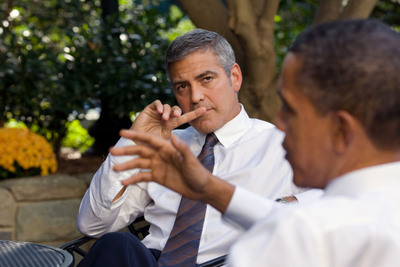
www.satsentinel.org/take_action
http://notonourwatchproject.org
http://sudanwatch.blogspot.com
Sudan (Listeni /suːˈdæn/), officially the Republic of Sudan, is a country in northeastern Africa. It is the largest country in Africa and the Arab world, and tenth largest in the world by area. The people of Sudan have a long history extending from antiquity which is intertwined with the history of Egypt, with which it was united politically over several periods. After gaining independence from Egypt and the United Kingdom in 1956, Sudan suffered 17 years of civil war followed by ethnic, religious and economic conflicts between the Northern Sudanese (with Arab and Nubian roots), and the Christian and animist Nilotes of Southern Sudan.This led to a second civil war in 1983, and due to continuing political and military struggles, Sudan was seized in a bloodless coup d’état by colonel Omar al-Bashir in 1989, who thereafter proclaimed himself President of Sudan.
Sudan then achieved great economic growth by implementing macroeconomic reforms and finally ended the civil war by adopting a new constitution in 2005 with rebel groups in the south, granting them limited autonomy to be followed by a referendum about independence in 2011. Rich in natural resources such as petroleum and crude oil, Sudan’s economy is currently amongst the fastest growing in the world. The People’s Republic of China and Japan are the main export partners of Sudan. Read More: > HERE <
Who we are – Our mission is to focus global attention and resources towards putting an end to mass atrocities around the world. Drawing upon the powerful voices of artists, activists, and cultural leaders, Not On Our Watch generates lifesaving humanitarian assistance and protection for the vulnerable, marginalized, and displaced. We encourage governing bodies to take meaningful, immediate action to protect those in harm’s way. Where governments remain complacent, Not On Our Watch is committed to stopping mass atrocities and giving voice to their victims. Founders: Don Cheadle, George Clooney, Matt Damon, Brad Pitt, David Pressman, Jerry Weintraub
A Message From George Clooney and John Prendergast – A new state is being born in Southern Sudan against a backdrop of decades of war between the South and North of Sudan. A peace deal in 2005 ended the latest round of open conflict, but the possibility of a return to war remains high as Southern Sudan prepares for independence.
One of the biggest risks in this dangerous moment is that an incident on the highly armed border could lead to wider conflict. The government in Khartoum has armed militias in contested bordering regions, the government air force has bombed border areas, and both sides have massed military units and equipment along the hottest border spots.
These areas have witnessed some of the most deadly conflict in the world since World War II. The former director of national intelligence says that Southern Sudan is the place in the world most likely to experience genocide.
We can’t allow another deadly war, and we surely cannot stand by in the face of a genocide threat.
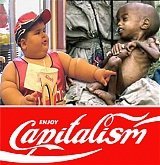
Soon, the people of Southern Sudan will vote for independence, placing millions of civilians in the potential path of war. George Clooney and the Enough Project recently spent time in Sudan along the border between the north and south and saw what a return to war could look like. This video from the trip highlights the challenges Sudan faces as it works toward holding a peaceful referendum and avoiding a return to civil war. It’s not inevitable. We can stop this war before it starts. Visit www.SudanActionNow.org to find out more.
We were late to Rwanda. We were late to the Congo. We were late to Darfur. There is no time to wait. With your support, we will swiftly call the world to witness and respond. We aim to provide an ever more effective early-warning system: better, faster visual evidence and on-the-ground reporting of human rights concerns to facilitate better, faster responses.
This is why we have launched the Satellite Sentinel Project. There has never been a sustained effort to systematically monitor potential hot spots and threats to human security, in near real-time, with the aim of heading off humanitarian disaster and war crimes before they occur.
Previously, when mass atrocities occurred in Darfur, the Government of Sudan denied its involvement. Since photographers could not get access, it took years to amass evidence of genocide. But now we can witness in near real-time and put all parties on notice that if they commit war crimes, we will all be watching, and pressuring policymakers to take action.
We want to cast a spotlight – literally – on the hot spots along the border to record any actions that might escalate the chances of conflict. We hope that if many eyes are on the potential spoilers, we can all help detect, deter and interdict actions that could lead to a return to deadly violence. At the very least, if war crimes do occur, we’ll have plenty of evidence of the actions of the perpetrators to share with the International Criminal Court and the UN Security Council.
The world is watching because you are watching. This is our opportunity to prevent a war, to deter genocide. Make your voice heard. Click here to take action in support of peace in Sudan.
- www.looktothestars.org
- 10.01.11 VIDEO Kofi Annan speaks to the BBC in an interview about the Sudan referendum
- www.ourworldisnotforsale.org
- www.otherworldsarepossible.org
- Acacia Senegal – Sudan’s Miracle Commodity *
- Articles on Africa , Traditional Medicine
- Meet Sudan Action Now, friends, fans at fb <
- Meet Human Rights Watch, friends, fans at fb <
- Meet IFG Forum on Globalization, friends, fans at fb <
- Meet Global Witness, friends, fans at fb <
- Meet Alternative Energy News, studies, friends, fans at fb <
- Meet UN Millenium Goals, studies, friends, fans at fb <
- Meet World Fair Trade Organization, friends, fans at fb <
- Meet UNHCR Refugee Agency, friends at fb <
Save Biodiversity – Herbs & Food Regulation
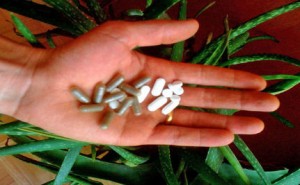
www.gmcontaminationregister.org www.un.org/humanrightsday/2010
www.anh-europe.org/freedom-health-choice
www.saveourherbs.org.uk/Petition.html
The Traditional Herbal Medicinal Products Directive, 2004/24/EC, was established to provide a regulatory approval process for herbal medicines in the European Union (EU), and came into force on 30 April 2004 . Previously, there was no formal EU wide authorisation procedure, so each EU member stated regulated these types of products at the national level. Under this regulation, all herbal medicinal products are required to obtain an authorisation to market within the EU. Those products marketed before this legislation came into force can continue to market their product until 30 April 2011, under the transitional measures defined in the Traditional Herbal Medicinal Products Directive. Once this time limit has expired, all herbal medicinal products must have prior authorisation before they can be marketed in the EU. Read More: > HERE <
Ayurveda (Sanskrit: आयुर्वेद; Ä�yurveda, the „science of life“) or ayurvedic medicine is a system of traditional medicine native to India and practiced in other parts of the world as a form of alternative medicine.In Sanskrit, the word ayurveda consists of the words Ä�yus, meaning „longevity“, and veda, meaning „related to knowledge“ or „science“.Evolving throughout its history, ayurveda remains an influential system of medicine in South Asia.The earliest literature on Indian medical practice appeared during the Vedic period in India.The Suśruta SaṃhitÄ� and the Charaka SaṃhitÄ� were influential works on traditional medicine during this era.Over the following centuries, ayurvedic practitioners developed a number of medicinal preparations and surgical procedures for the treatment of various ailments and diseases. Read More: > HERE <
Health Choice – Have you heard the hype about future restrictions on natural health products? Find out how the ‚boil-the-frog-slowly‘ method masterminded by governments and transnational corporations is out to restrict YOUR FREEDOM OF CHOICE in the area of natural healthcare.
Read on…… find out here what’s really going on. This is about your future, and that of the next generation. Where in the world are restrictions most imminent?
> European Union (EU) – Canada – United States of America (USA) – New Zealand <
As a consequence of moves to harmonise global food laws, concerted attempts to control consumer access to natural heath products are being made by governments and trans-national corporations.
At a global level the regulatory framework is being developed through the Codex Alimentarius Commission (see our Codex campaign page).
The system of control essentially moves natural health products from a category of food to products requiring pre-market authorisation, where the authorisation systems being used or proposed are very onerous and so lock out large numbers of products (e.g. around 50% of pre-2004 products in Canada).
All this is being enacted under the often conflicting guises of ‘consumer protection’ and ‚free trade‘, nearly always creating a situation where big business gets what it wants while our freedom to choose natural health products is dramatically curtailed.
Inappropriate EU legislation could effectively steam-roller ancient and effective medicine cultures, such as Ayurveda, out of existence.
Certain combinations of herbal products, and those containing significant levels of vitamins and minerals, will be prohibited.
The EU’s Human Medicinal Products Directive (HMPD), issued ostensibly to protect consumers from medical disasters such as the thalidomide tragedy, now has a scope so broad that it can be used to classify certain foods, herbs and nutrients – even water – as drugs.
Many herbal products would be evaluated by inappropriate pharmaceutical criteria, rather than by practicing medical herbalists and others with specific expertise in the field of traditional medicines.
The cost of complying with these pharma-friendly criteria will be prohibitively expensive for many small to medium size enterprises and there could be serious consequences for small herb-producing farmers and communities in non-EU countries.
As you may know The Traditional Herbal Medicinal Products Directive 2004/24/EC (THMPD) of the European Union will have long-term and far-reaching implications for Ayurveda and other Traditional Systems of Medicine (TSMs), specially for the manufacturers and practitioners of these systems. / Senate Bill S510 Makes it illegal to Grow, Share, Trade or Sell Homegrown Food — Section 510(k) and the device approval process. Food Freedom warns about the consequences from this bill.
Jede(r) von uns benutzt im täglichen Leben Heilpflanzen in Form von Tees, chinesische, ayurvedische Mittel, Kräutermischungen etc. Dies soll alles verboten werden! Lest selbst: Ab April 2011 soll das Gesetz für Nahrungsergänzungsmittelund Heilkräuter (THMPD – Traditional Herbal Medical Product Directive) EU-weit durchgesetzt werden.
Das bedeutet:Die auf Teemischungen basierende Kräuterheilkunde wäre dannwahrscheinlich um die Hälfte der dort eingesetzten Kräuter beraubt, da es wenig „wissenschaftliche Forschung“ über gebräuchliche, einheimische Kräuter gibt und diese dann ohne aufwändige Forschung keine Zulassung alsArzneimittel bekämen.
Fast alle chinesischen und ayurvedischen Heilpflanzen und ein guter Teil der europäischen Heilpflanzen sollen mit dieser EU-Novelle verboten undaus dem Handel genommen werden.
Die Gründe liegen auf der Hand: Die Pharmaindustrie hätte dieNaturheilkunde „Schachmatt“ gesetzt und könnte diesen wachsenden Marktfür sich übernehmen.Jetzt sind wir alle gefragt und können noch Einfluss nehmen.In Deinem, Ihrem, Eurem und unserem Interesse.

www.sourcewatch.org/Global_Corporations
-
www.abtei-st-hildegard.de ( WHO owns Hildegard ? )
Mountain Minorities and Indigenous Peoples

NGO Development Projects Active in Tibet
About ICIMOD – The International Centre for Integrated Mountain Development, ICIMOD, is a regional knowledge development and learning centre serving the eight regional member countries of the Hindu Kush-Himalayas – Afghanistan, Bangladesh, Bhutan, China, India, Myanmar, Nepal, and Pakistan – and based in Kathmandu, Nepal.
Globalisation and climate change have an increasing influence on the stability of fragile mountain ecosystems and the livelihoods of mountain people. ICIMOD aims to assist mountain people to understand these changes, adapt to them, and make the most of new opportunities, while addressing upstream-downstream issues. We support regional transboundary programmes through partnership with regional partner institutions, facilitate the exchange of experience, and serve as a regional knowledge hub. We strengthen networking among regional and global centres of excellence. Overall, we are working to develop an economically and environmentally sound mountain ecosystem to improve the living standards of mountain populations and to sustain vital ecosystem services for the billions of people living downstream – now, and for the future.
International Mountain Day, celebrated on December 11, gives us an opportunity to reflect on the relevance of mountains for the world. This year the International Mountain Day theme focuses on indigenous peoples and other minorities living in the mountains. The purpose is both to highlight the threats and challenges faced by these communities, and to acknowledge the invaluable knowledge they have and the contributions they can make towards overcoming global challenges of poverty and loss of diversity in a rapidly changing world.
A majority of the world’s indigenous women and men live in mountain regions, many on the margins of society and facing poverty and exclusion. The Hindu Kush-Himalayan region has some of the highest diversity of indigenous peoples and other minorities in the world. An ICIMOD report identified more than 600 living languages in the Himalayas, 400 spoken by less than 100,000 people. According to current forecasts, ninety per cent of all languages could disappear within 100 years. The loss of these languages not only erodes an essential component of a group’s identity, it is also a loss to heritage for all humankind.
The UN General Assembly adopted the UN Declaration on the Rights of Indigenous Peoples in September 2007, marking an important step in international efforts to preserve the identity of indigenous peoples. However, implementation has a different speed and different levels of commitment in different countries.
In agricultural terms, mountains are often considered ‘marginal lands’, unsuitable for modern commercial farming which focuses on cultivation of single crop varieties for large markets. Indigenous mountain people and other mountain communities continue to use traditional practices and techniques including sophisticated terracing systems, water transportation and irrigation schemes, and a combination of pasture, forestry and farming practices. Indigenous women and men serve as custodians of this traditional knowledge on how to farm under difficult mountain conditions, and how to conserve important reservoirs of agricultural biodiversity.
They sustainably farm a wide variety of crops that are adapted to a range of different elevations, slope conditions, and micro-climates, and this knowledge will be of great, if as yet little noticed, value in the world’s efforts to adapt to climate and other drivers of change. The autonomous adaptation practiced by mountain communities consists of community-based interventions that address underlying causes of vulnerability and reduce the risk of possible adverse impacts of climate change by building upon the existing rich indigenous knowledge base on adaptation to environmental change and helping to strengthen the resilience of the communities. Women especially play a critical role in gendered indigenous knowledge. Their roles and expertise have yet to be acknowledged, but has great potential for adapting to multiple drivers of change.
Indigenous mountain communities are connected to the land, the environment, and natural resources in ways that are often inextricably intertwined and therefore expressed in spiritual and socio-cultural terms. Respecting this worldview, and preserving the languages, music, artwork, folk tales, culture, meanings, and myths that express it, is critical for the survival of indigenous communities in mountain areas. This ‘intangible heritage’ also enriches the global community, providing inspiration and insights for realising a more sustainable relationship between humankind and the environment.
A scene from Tibetan Documentary „Leaving Fear Behind,“ shows a nomad school in Tibet (Amdo) working to preserve Tibetan Language and culture as it’s very existence is under threat from Chinese Government policies. Find out more: http://studentsforafreetibet.org Leaving Fear Behind: The Film the Chinese Government Doesn’t Want the World to See. // sumit sadhak practicing handstand in himalyas on the bank of ganga river one of the most important places for yogis.
The involvement of indigenous mountain communities is an important prerequisite for sustainable mountain development. Therefore, as governments work toward addressing mountain development priorities, it is critical that they live up to their commitments outlined in the UN Declaration on the Rights of Indigenous Peoples.
We hope that this year’s International Mountain Day will help to increase awareness of the central role of Minorities and Indigenous Peoples for mountain development, and to motivate all citizens, policy makers, and development actors to recognise the importance of their contribution to sustainable development. We trust that the Day will encourage organisations to invite indigenous and traditional mountain communities to participate actively in national and international efforts to understand and adapt to the multiple drivers of change, including climate change, in the mountains of the world.
With best wishes, Andreas Schild http://www.icimod.org
Culture and Development – Placing culture at the heart of development policy constitutes an essential investment in the world’s future and a pre-condition to successful globalization processes that take into account the principles of cultural diversity. It is UNESCO’s mission to remind all States of this major issue.
As demonstrated by the failure of certain projects underway since the 1970s, development is not synonymous with economic growth alone. It is a means to achieve a more satisfactory intellectual, emotional, moral and spiritual existence. As such, development is inseparable from culture. Strengthening the contribution of culture to sustainable development is a goal that was launched in connection with the World Decade for Cultural Development (1988-1998). Ever since, progress has been made thanks to a corpus of standard-setting instruments and demonstration tools such as cultural statistics, inventories, regional and national mapping of cultural resources.
In this regard, the major challenge is to convince political decision-makers and local, national and international social actors to integrating the principles of cultural diversity and the values of cultural pluralism into all public policies, mechanisms and practices, particularly through public/private partnerships.
This strategy will aim, on the one hand, at incorporating culture into all development policies, be they related to education, science, communication, health, environment or tourism and, on the other hand, at supporting the development of the cultural sector through creative industries. By contributing in this way to poverty alleviation, culture offers important benefits in terms of social cohesion. Read more: http://portal.unesco.org/culture/en
The Challenge of Human Rights and Cultural Diversity – United Nations Background Note by Diana Ayton-Shenker:
The end of the cold war has created a series of tentative attempts to define „a new world order“. So far, the only certainty is that the international community has entered a period of tremendous global transition that, at least for the time being, has created more social problems than solutions.
The end of super-power rivalry, and the growing North/South disparity in wealth and access to resources, coincide with an alarming increase in violence, poverty and unemployment, homelessness, displaced persons and the erosion of environmental stability. The world has also witnessed one of the most severe global economic recessions since the Great Depression of the 1930s.
At the same time, previously isolated peoples are being brought together voluntarily and involuntarily by the increasing integration of markets, the emergence of new regional political alliances, and remarkable advances in telecommunications, biotechnology and transportation that have prompted unprecedented demographic shifts.
The resulting confluence of peoples and cultures is an increasingly global, multicultural world brimming with tension, confusion and conflict in the process of its adjustment to pluralism. There is an understandable urge to return to old conventions, traditional cultures, fundamental values, and the familiar, seemingly secure, sense of one’s identity. Without a secure sense of identity amidst the turmoil of transition, people may resort to isolationism, ethnocentricism and intolerance.
This climate of change and acute vulnerability raises new challenges to our ongoing pursuit of universal human rights. How can human rights be reconciled with the clash of cultures that has come to characterize our time? Cultural background is one of the primary sources of identity. It is the source for a great deal of self-definition, expression, and sense of group belonging. As cultures interact and intermix, cultural identities change. This process can be enriching, but disorienting. The current insecurity of cultural identity reflects fundamental changes in how we define and express who we are today. Read More: * HERE*
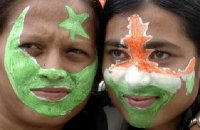
Traditional Food, Medicine & Biodiversity
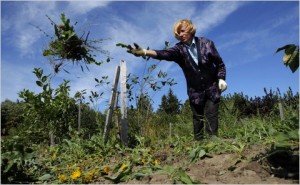
The N.I. Vavilov Institute of Plant Industry
Nikolai Ivanovich Vavilov (Russian: Николай Иванович Вавилов) was a prominent Russian and Soviet botanist and geneticist best known for having identified the centres of origin of cultivated plants. He devoted his life to the study and improvement of wheat, corn, and other cereal crops that sustain the global population. While developing his theory on the centres of origin of cultivated plants, Vavilov organized a series of botanical-agronomic expeditions, collected seeds from every corner of the globe, and created in Leningrad the world’s largest collection of plant seeds. Read More: > HERE <
The Convention on Biological Diversity (CBD), known informally as the Biodiversity Convention, is an international legally binding treaty. The Convention has three main goals: 1. conservation of biological diversity (or biodiversity);2. sustainable use of its components; and 3. fair and equitable sharing of benefits arising from genetic resources. In other words, its objective is to develop national strategies for the conservation and sustainable use of biological diversity. It is often seen as the key document regarding sustainable development. Read More: >HERE<
Ensuring that the genetic diversity of the world’s food crops is preserved for future generations is an important contribution toward the reduction of hunger and poverty in developing countries. This is where the greatest plant diversity originates and where the need for food security and the further development of agriculture is most urgent.
About VIR: “The scientific network of VIR includes the institute’s headquarters with 9 plant resources departments, 13 fundamental research laboratories, and 12 experiment stations in different geographic zones of Russia. Its chief activities are Plant Genetics Resources (PGR) collections, conservation and study.”
This recent news item was originally reported on Science Magazine’s Science Insider news feed. Earlier reportage on this story came from The Scientist blog. Top Photo: Alaska wild “berries” from the Innoko National Wildlife Refuge; U.S. Fish and Wildlife Service employee (public domain). Bottom Photo: VIR, Pavlosk Exp. Station http://www.greendump.net
Last week, we described the plight of the Russian Pavlovsk Experimental Station: Plans for a housing complex threaten some 5,000 rare plants, including varieties found nowhere else on the planet. A court judgment last week meant that only the president or prime minister could save the plants, which scientists said would take years to relocate. Now government telegrams and a presidential tweet hint that the plants might have a chance. http://blogs.discovermagazine.com
Russia Defers Razing of Seed Repository – modest reprieve for a seed bank that is home to the world’s largest collection of European fruits and berries. http://green.blogs.nytimes.com
The Vavilov Institute in Russia is the oldest seed bank in the world with a collection of over 325,000 samples of seed. Video from The Vavilov Institute from The Seed Hunter on National Geographic Channel http://natgeotv.com
Vavilov Institut Alblinse, Russian Housing Plan Threatens Seed Bank
The Institute of Plant Industry http://www.vir.nw.ru/ was established in 1921. Nikolai Vavilov was the head of this institute from 1924 to 1936 and had, and still has, the world’s largest collection of plant seeds. During the early 1930s, he became the target of the Lysenkoist debate and was exiled. In 2010 the plant collection at the Pavlovsk Experimental Station was to be destroyed to make way for luxury housing
IRRI http://irri.org Rice Research is a nonprofit research and education center established to reduce poverty and hunger, improve the health of rice farmers and consumers, and ensure environmental sustainability
Navdanya http://www.navdanya.org is a network of seed keepers and organic producers spread across 16 states in India.Navdanya has helped set up 54 community seed banks across the country, trained over 500,000 farmers in seed sovereignty, food sovereignty and sustainable agriculture over the past two decades, and helped setup the largest direct marketing, fair trade organic network in the country.
ARCHE NOAH: http://www.arche-noah.at Wir sehen unsere Arbeit als Antwort auf die restriktive globale Saatgutpolitik. Die Vielfalt an Kulturpflanzen ist Lebensgrundlage für kommenden Generationen. Und Lebensqualität für uns alle ! Wir sind ein Verein, der sich seit fast 20 Jahren für den Erhalt alter Kulturpflanzen einsetzt, mit über 8.000 Mitgliedern, Förderern und aktiven ErhalterInnen.
Svalbard Global Seed Vault – Cultural plants for the future. http://www.regjeringen.no Since the climate conditions change so rapidly, it is extremely important to ensure the genetic diversity of all the cultural plants of the world. In these genes, we will find the necessary qualities to make effective cultural plants in the future. This is absolutely necessary to secure a satisfactory food supply for the global population. Within the next 40 years, the world’s food production must be doubled, says the Norwegian minister of agriculture and food, Lars Peder Brekk.
Was wären die Schwaben ohne ihre Linsen? Trotzdem stellten Ende der 50er Jahre die letzten Landwirte “auf der Alb” den Anbau von Linsen ein, da die Importe zu billig waren und den Verbrauchern egal war, woher ihre Linsen kamen. Im Pflanzenbau herrschte damals der Zeitgeist “höher, schneller und immer mehr”. Hauptsache, der Ertrag von Weizen, Mais und Kartoffeln stieg. Egal, wie viel “Chemie” dazu auf den Acker kam. Diese Ideologie war den hiesigen Bio-Bauern schon immer ein Dorn im Auge.
Außerdem vermissten sie ihre Heimatfrucht aus der Kindheit: “Die alten Bauern bei uns in der Gegend haben uns erzählt, wie sie noch Linsen angebaut haben, zusammen mit Gerste ( GERSTE IM AYURVEDA ) und Hafer, als Stützfrucht für die zarten Pflanzen. Beim Linsen essen haben wir davon geträumt, wieder Alb-Linsen auszusäen”, erinnert sich Woldemar Mammel. Der Bioland-Bauer aus Lauterach auf der Alb baut bereits seit den 80er Jahren wieder Linsen an und begeisterte auch andere für seine Idee. Mittlerweile machen elf Bäuerinnen und Bauern in der “Öko-Erzeugergemeinschaft «Alb-Leisa»” mit und bewirtschaften 30 Hektar mit Albleisen.
Unterstützung bekommen sie von anderen Verfechtern guter Esskultur: Vor zwei Jahren hat Slow Food Deutschland die Alb-Linse in die “Arche des Geschmacks” aufgenommen, um dieses traditionelle landwirtschaftliche Erzeugnis der Schwäbischen Alb vor dem Vergessen zu retten. Die Sache hat nur einen Haken: Die original schwäbischen Alb-Linsen waren bis vor kurzem unauffindbar und so mussten sich die Bio-Bauern mit französischen und italienischen Sorten behelfen. “Niemand hatte es für nötig gehalten, diese einzigartigen, im Bundessortenregister eingetragenen Linsensorten aufzubewahren”, beklagt Mammel.
Doch die verschollenen Linsen berührten auch andere schwäbische Herzen: 2006 machten sich unabhängig voneinander der private Pflanzenzüchter Klaus Lang und Klaus Amler von der Stuttgarter Agentur Ökonsult auf die Suche. Beide werden ein Jahr später in Russland fündig! Das Wawilow-Institut in St. Petersburg, das seit 1925 für die Genvielfalt der Nutzpflanzen kämpft, hat die zwei Sorten aufbewahrt.
RICE: Rice is first mentioned in the Yajur Veda (c. 1500-800 BC) and then is frequently referred to in Sanskrit texts. Today, the majority of all rice produced comes from India, China, Japan, Indonesia, Thailand, Burma, and Bangladesh.
Asian farmers still account for 92-percent of the world’s total rice production. Rice is grown in all parts of India. Genetics shows that rice was first domesticated in the region of the Yangtze River Valley. Read More: > HERE <
- www.pranapositive.com/shm/Save Herbal Medicine
- Articles on Biodiversity
- IRRI Rice Research/Climate Change /Bioversity/Eco Crises
- www.intlcss.org International Crop Science Society
- ARCHE NOAH, Erhaltung/Verbreitung Kulturpflanzenvielfalt
- Meet UN International Day 2010 of Biodiversity at fb
- Meet Global Biodiversity Protection at fb
- www.ienearth.org Indigenous Environmental Network at fb
- www.navdanya.org studies friends fans at fb
- www.ecobuddhism, friends and studies at fb
- Greenpeace China 绿色和平 綠色和平 at fb
- Meet SLOW FOOD , friends, pages at fb
- Meet TIBETAN TSAMPA Group and Friends at fb
- http://en.wikipedia.org/wiki/Farmers’_suicides_in_India
- http://en.wikipedia.org/wiki/Europ.Directive Trad.Herbal_Med.Products
- Meet COP 16 UN Conference, friends, studies, fans at fb
- Meet International Year of Biodiversity, friends, fans at fb
- Meet NaturalNews.com at facebook
NaturalNews.com is an independent news resource that covers the natural health and wellness topics that empower individuals to make positive changes in their personal health. NaturalNews offers uncensored news that allows for healthier choice.
Siddha system of Indian medicine

http://agasthiaherbal.tripod.com
Bio Piracy – Commercialization_of_trad. medicines
http://healingfromtheroots.blogspot.com
The Siddha medicine is a form of south Indian Tamil traditional medicine and part of the trio Indian medicines – ayurveda, siddha and unani.This is nearly 10,000 years old medical system followed by the Tamil people, both in India and abroad. This system of medicine was popular in ancient India,due to the antiquity of this medical system,the siddha system of medicine is believed to be one of the oldest medical system. The system is believed to be developed by the 18 siddhas in the south called siddhar. They are the ancient supernatural spiritual saints of India and the Siddha system is believed to be handed over to the Siddhar by the Hindu God – Lord Shiva and Goddess Parvathi. So are the siddhars, the followers of Lord Shiva (Shaivaites). Siddhar’s total nos are eighteen, with agathiyar being the first Siddhar. Read More: > HERE <
Siddha system of medicine is one of the oldest medical systems of India existed separately in early times. The system has flourished well in India for many centuries. Although this system has declined in later years, in the wake of changing mode of life and modern medicine, it continues to sustain its influence on the masses because of its incomparable intrinsic merits. Siddha medicine can combat all types of diseases, especially the chronic diseases, which baffles and eludes even the modern sophisticated medicine.
There are two ancient systems of medicine in India, the Siddha which flourished in the south and the Ayurveda prevalent in north. Siddha system is called ‘saiva sampradayam’ (tradition of Lord Shiva) and Ayurveda is called Brahma or ‘Arsha sampradayam’ (the tradition of rishis). The inference to be drawn from these traditions is that, there is no exact point of time to which the beginning of these systems could be traced. They are eternal, without a beginning or end: they began with man and may end with him. The term ‘Siddha’ means ‘everlasting’, ‘Conquering death’, ‘holy immortals’, etc. This system is originated by 18 Siddhars headed by Siddha ‘AGASTHYA’. Siddhars were a Class of popular writers in Tamil in all branches of knowledge and many of their works were written in what is called High Tamil. They were men of high culture, intellectual and spiritual faculties combined with supernatural powers and intuitive intelligence acquired by yogic powers. The prevention and the cure of illness is the basic aims of all systems of medicine.
The Siddha system has, in addition, a transcendental motivation, a concern for what might be called the ‘IMMORTALITY OF THE BODY’. The ‘Siddhars’ were those who had renounced the world after experiencing its instability and uncertainties. They practiced yoga extensively and wrought great miracles, imbued with Devine power. They knew the past, the present and the future, rejuvenated their body, lived for many years, ultimately attained the state of ‘perpetual consciousness’ or ‘Samadhi’ and enjoyed eternal bliss. Big Hindu Temples sprang up over their Samadhi and centers of devout worship even today. They form the most important temples in south India.
Fundamental principles of Siddha – According to siddhars ‘Nature is man and man is nature’, therefore both are essentially one. The universe consists of two essential entities, matter and energy which the Siddhars call ‘Siva’ and ‘Shakthi’. The two co-exist and are inseparable.
The universe consists of five elements and these elements should not be confused with the elements of modern chemistry. They are primordial elements. They are Munn (solid), Neer (fluid), Thee (radiance), Vayu (gas), and Akasam (ether). All created and evolved matter in the world, be it animal, vegetable, or mineral, falls under these categories. The human anatomy and physiology, the causative factor of disease, the materials for the treatment and cure of diseases, the food for the sustenance of the body, all fall within the five elemental categories. This is the working hypothesis.
The human being is made up of the five elements. The various tissues of the body are the combinations of these elements. In one tissue one element may be more predominant than the others. The physiological function in the body is mediated by three substances- Vatham, Pitham, and Kapham. In each cell in the body these three co-exist and function harmoniously. Vatham is formed by the basic elements Akasam and vayu. Pitham is formed by Thee and Kaph is formed by Munn and Neer. If these three functions normally, health is maintained. The body consists of seven ‘dhatus’: Rasa (lymph), Kurudi (blood), Tasai (muscle), Kozhuppu (fat), Elumbu (bone), Majja (marrow) and Sukkilam and Artavam (male and female hormones). In these seven tissues one or other of the three ‘doshas’ predominate. In the tissue blood, Pitham predominates, in bone Vatham and in other tissues Kapham. The doshas should not be pictured as separate entities staying in the body in different places. Though they are treated separately, it is to be understood that they combine in their action to make life go on; they may be compared to three pillars which supports a structure. They conjointly permeate every structure in the body; so much so there is not a single point in the body where all the three doshas are not present. The maintenance of equilibrium of the three doshas is health; the disturbance of the equilibrium is disease. The concept is similar to the theories of cellular mechanism, biochemical changes, enzymes and hormones, of modern medicine- Both Siddha and Ayurveda are based on humoral pathological doctrine- the tridosha theory- the three supports of human body system.
Diagnosis and basis of treatment – The words ‘noai nadal, noai mudal nadal’ in the ancient texts denotes the approach to disease and determination of the etiology of the disease. Siddha concept for diagnosis is to investigate the cause of the disease, the signs and symptoms, complications if any, and pathological tissue changes. The Siddhars look at body and disease together to arrive at a conclusion regarding the condition or diagnosis of the case. This condition is an essential pre-requisite for treatment. In addition, eight important factors are to be ruled out. They are pulse, touch, tongue, colour, speech, eyes, faceus and urine. The five elements of the body and their life factors: the five elements of the body (pancha bhootas) and Vatham, Pitham, and Kapham (tridoshas) are widely described by Siddhars who classified the diseases into 4448 varieties. The etiology, signs and symptoms and treatment were explained for all the varieties by Siddhars. Medicines should be prepared according to individual needs separately.
The three ‘humors’ Vatha, Pitha and Kapha represents air, fire and water of the five elements (pancha bhootas), which form the connecting link between microcosm or man and macrocosm or the earth. These three humors maintain the human body through their combined functioning. The normal order of tridosha in a healthy person is 1: ½: ¼ or 4:2:1 respectively. If this equilibrium is disturbed disease sets in. Medicine are prescribed to set right the imbalance in the life factors either by addition, reduction or neutralization, since all matters (herbs, minerals and metals) contain the five elements and hence three factors. The presence of a particular factor in a substance is found by the taste of the latter. The five elements in different combinations form six tastes. Innumerable varieties of herbs are mentioned in Siddha literature. Many of these were described in a manner very difficult to understand. There are 64 types of medicine in Siddha pharmacopoeia, 32 for internal administration and 32 for external applications, besides 11 metals, 64 mercurial and non-mercurial), 120 uparasam (salts and other minerals). Diet and Anupanam (vehicle for administration) plays a very important role in Siddha treatment. A single herb like ’solanum trilobatum‘ is used in 20 different diseases with different Anupanams.
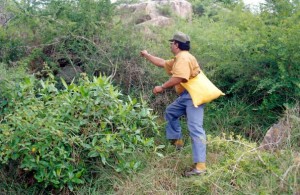
Unique Siddha medicinal preparations – For a medicine to be effective, the inorganic substances have to be brought to their atomic form. Siddhars developed the knowledge of bringing inorganic substances into atomic and ionic form which is easily absorbed by the system, when ground with herbal juices and put on the fire.
The specialized Siddha preparations are ‘parpam’, ‘chendooram’, ‘chunnam’, ‘mezhagu’. These are metallic and mineral preparations by transmutation processes of converting the metal to ashes and waxy constituency which exerts only therapeutic properties and devoid of any metallic traces. These are also the byproducts noticed during Siddhars Alchemical practices.
Muppu: Muppu has a distinct place in Siddha medicine. It is the combination of three rare salts which enhances the efficacy of any Siddha medicine. The preparation and ingredients are a closely guarded secret. It is also believed that ‘muppu’ also engender yogic concentration, a part of Siddha tradition.
Kaya kalpa: This is similar to ‘Rasayana chikitsa’ of Ayurveda and ‘gerontology’ of modern medicine. The word ‘kalpa’ means ‘able’, ‘competent’. When it is connected with ‘kaya’ or body, the term means competency or ability of the body. While in Ayurveda, rasayana is different from ‘vajeekarana’, kaya kalpa does not treat vajeekarana or the science of aphrodisiacs separately. When kayakalpa treatment is undertaken, the vigor of body and mind are restored and so there is no need for separate attention to vajeekarana. Siddhars were more concerned about the ultimate goal of living and less with worldly pursuit of sex. How ever, kayakalpa is very much capable of achieving the ends of both rasayana and vajeekarana.
Present status and scope: There are 6 Siddha medical colleges in Tamil nadu and one in Kerala catering to the needs of those who are interested in leaning siddha medicine course for 5 and half years and post-graduate specialization courses for two years.
Due to the popularity of ‘Siddha’ in India and abroad, the government of India has decided that Allopathic and Indian system of medicine should together contribute towards the development of the National Health Services. In addition, Indian system of medicine has also been recognized for the purpose of reimbursement of medical treatment under the central services.
The central council is executing its research programme in Siddha through Central research institute, regional research institute, mobile clinical research units, medico botanical survey unit etc. For the research in Siddha system, many research units were started at New Delhi, Bengalooru, Chennai, Pondycherry, Palayamkottai and Trivandrum.
“Food is medicine and medicine is food” and “Prevention is better than cure” were the slug lines of Siddhars and their followers. In the past people had the first hand information of the health and toxic effects of various species of flora and they provided the raw materials to the medical man for compilation. Thus Siddha system is a science perfected into an art, coupled with primitive intuitions into nature’s resources and secrets.
A close look at the eating habits of animals and birds reveals they eat food raw and ripe consisting of all the six tastes where as man eats only food stuff of four tastes, leaving bitter and astringent, which are pre-requisites for healthy circulation f blood. Bitterness fights against bacterial infection and astringency maintains the right blood quality and its constituents. Small quantities of agathi grandiflora, bitter gourd, seeds of solanum xanthocarpum, flowers of neem eaten now and then in small quantities, ward of many microbiological and bacterial infections.
It was a common knowledge for many Indian to possess the rare knowledge of various medicinal properties of ingredients in our culinary preparations and thus many an Indian woman trained in the traditional oriental ways of food preparation is an excellent and masterly physician without any master degree…
As a sampler, when excessive smoking causes dizziness, stomach disorders and makes the male suffer from nicotine poison, immediately the lady knows the sure cure for this disorder and gives him agathi grandiflora leaves, deliciously cooked at regular intervals and thus cures him of his malady, similarly she knows the properties of medicinal food recipes out of edible greens, leaves, barks, berries and other vegetables and the value of pepper, mustard, ginger and a host of other household provisions, rarely men of the past generations were perforce compelled to visit the medical experts and specialists who were scarce and few.
The leafy green mentioned above and several other bitter lasting foods and dishes as in margosa leaves and other plants and medicinal herbs, kill or exterminate the nematodes like thread worm, hookworm and tape worms and similar germs infesting the bowels and alimentary canal.
Religion is an indispensable stand in the web of Hindu Indian life that permeates through the daily life and character of Indians. The wise men of old India have deftly fused in their life certain ablutions, ceremonial rights and codes of conducts for normal healthy life. The Hindu Icons or the Pantheons of various Gods and particular modes of worship with leaves, flowers, milk, butter, honey, ghee, betel and nuts are symbolic and of great significance just as an abacus is used to induce children to learn arithmetic; these observations have been designed to promote for living a healthy life of body, mind and spirit. The practices may seem succinct or stupid to the modern civilization, but they were quite significant and sacred in the past.
The ancient wisdom of our ancestors should not be ridiculed because of our ignorance or non realization of their intrinsic worth. Let me present few examples of these rites and rituals and anyone with faithful, sincere interpretations of facts will come to the conclusion as how the medicine, art, culture, rituals and the way to healthy living with longevity were interwoven during prehistoric period.
While worshipping Lord Shiva, during the chanting and pooja, beal leaves (aegle marmelos) are offered to the Deity and after worship, some of these leaves are eaten by the devotees as ‘Prasad’ (blessings from God).this intake of beal leaves when followed regularly ensures good health by proper digestion and assimilation of food. It also removes the toxins in the body and is a blood purifier.
While worshipping mother Durga, the Goddess is being invoked with neem leaves and later consumed by the devotees. This is manna from heaven when consumed regularly in small quantities with its essence, as it proves wonderful disinfectant and germicide. Regular intake of this herb in any kind will be a sure elixir of life.
The foremost Hindu Deity Lord Ganesha, first to be propiated before commencing any important human project as per the belief. The Lord is worshipped with a particular type of grass – ‘Doorva’ (cynodon dactylon), which has been proven scientifically to possess the power of generating electricity in minute degree. When handling it augment one’s personal magnetism. It is of high medicinal value when administered orally. Another instance may seem superstitious but not without truth. Before initiating any auspicious rites, it is customary to make a crude image of Lord Ganesha with a fresh paste of either cow dung or turmeric paste and stick a small tuft of Doorva grass leaves to the person of the Deity. This image is abandoned and left to wither after performing pooja. Normally wet paste of either cow dung or turmeric when left exposed to atmosphere will be infested with bacteria and this does not happen with the sanctimonious Lord Ganesh’s image with the bunch of Doorva grass. It may baffle one’s imagination and one may not believe, but seeing believes!!!
Selection of purified herbs for compound Siddha preparations – Mango leaves are used in the worship of the Goddess of rivers- Ganga devi. Festoons of mango leave adorn temples and houses during festivals. A tuft of mango leaves dipped in the sacred water after worship Ganga is sprinkled over all the places of the premises and on the devotees. This serves as purificatory process. A decoction of mango leaves taken at regular intervals will cure many bodily illnesses.
The people of ‘Vishnu cult’ perform pooja of the Lord with ‘Tulsi leaves’ (ocimum sanctum). After the pooja 3-5 leaves are consumed as ‘Prasad’… these leaves consumed at regular intervals will build strong muscles and bones. It is also a wonderful prophylactic drug for many ailments.
Likewise ‘Lord Brahma’, the Creator is worshipped with country fig leaves and fruits. The intake of these leaves and fruits will restore the correct blood constituents due to its astringent properties. These few narrations give a glimpse into the astounding possibilities of simple herbal preparations with no intricate knowledge of orthodox Siddha compounds with elaborative preparation processes. With a primary knowledge of hundreds of species in vegetable kingdom and the knowledge of physical body, its physiology and anatomy and simple rules of health and hygiene, any layman can lead a healthy life free from diseases.
Similarly periodic oil-bath promotes real rejuvenation of the physical body, though the modern medical conception put it that the diet we take orally contain oily matter which could suffice for a healthy body. Folds and wrinkles disappear in due course, when taken regular oil bath, giving the person youth, glow and luster. There are many illustrations of Siddhars stating by proper physical exercise and perfect breathing, food habits, evacuation of bowels, many undesirable conditions get eliminated. Siddhars have also propounded many prescriptions for rejuvenating the body and this bulk is called ‘Kayakalpa’, literally meaning a body like stone. The most intriguing, perplexing and unique phenomenon of Siddha system of medicine is the ‘Kayakalpa group of herbs’ which is not found in any other systems of medicine in the world. These ensure physiotherapy, psychotherapy, preventive and curative aspects of diseases and pave the way for longevity. There are 108 kayakalpa herbs; many among them in daily use are onion, garlic, ginger, lemon, jequirity and turmeric etc.
On close scrutiny one will struck with much wonder as in how those days where there was not even a microscope, the ancient Siddhars were capable of describing the use of such things rich in vitamins, minerals, proteins, hormones, electrolytes and other nutrients grouped them as disease preventives for promoting longevity.
To conclude these scriptures and sciences embody all that was required for human advancements in the world and a study of these ancient literatures will be really productive of lasting benefits. We may confess that we are still ignorant of many things connected with the ancient thoughts and beliefs and it is our ignorance that belittles their greatness.
The revival of ancient systems, be they in medicine or moral code, requires a faithful interpretation of the views of the originators of these sciences and such a movement will be useful and indeed found necessary since modern discoveries still are incomplete and look forward to the ancient works for the ‘MISSING LINKS’.
The Siddha system of medicine deserves careful and faithful examination since it has in itself many principles which may go a long way to supply the defects and deficiencies of modern conceptions and that may save Indian society and generally the world from many a besetting peril…..
Exciting possibilities ahead: In conclusion, it must be said that Siddha medicine offers exciting avenues for investigations in the light of modern science and technology. Such investigations can lead to significant breakthroughs not just in herbal pharmaceuticals, but in conceptual and practical knowledge as well, with far-reaching benefits for the existing system of healthcare as a whole. But such investigative studies must necessarily be multidisciplinary, with full involvement of scholars in ancient Tamil scriptures, veteran Siddha Vaidyas, and tribal folks with knowledge of field work, historians and several other members of Siddha medical community at the local level. Exploration of the goldmine of Siddha knowledge and wisdom is certainly worth substantial investments of human and financial resources.
– Authored by Siddha vaidya P.S.Narasimha swamy,
Director- Agasthya Siddha literature research centre,
#1495, Dr. Ambedkar Road,
Krishna murthy puram, Mysore-5700 04 Cell: 09845167119
e-mail: swamy_siddha@yahoo.com , agasthyaswamy@gmail.com
Meet Narasimha Swamy (Agasthya Siddha), friends, fans at fb <
Erwin Kräutler – Right Livelihood Award
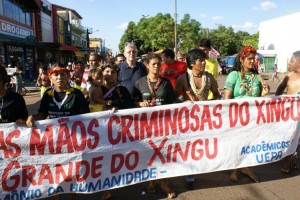
www.rightlivelihood.org/krautler.html
www.cimi.org.br (CIMI)
http://plattformbelomonte.blogspot.com
www.survivalinternational.org/news
The Right Livelihood Award, established in 1980 by Jakob von Uexkull, is an award that is presented annually, in early December, to honour those „working on practical and exemplary solutions to the most urgent challenges facing the world today“. An international jury, invited by the five regular Right Livelihood Award board members, decides the awards in such fields as environmental protection, human rights, sustainable development, health, education, and peace. Read More: > HERE <
Erwin Kräutler CPPS, auch Dom Erwin, (* 12. Juli 1939 in Koblach, Vorarlberg) ist römisch-katholischer Bischof und Prälat von Xingu, der flächenmäßig größten Diözese Brasiliens. 2010 wurde sein Einsatz für die Rechte der Indios und die Erhaltung des Amazonas-Urwalds mit dem alternativen Nobelpreis ausgezeichnet. Read More: > HERE <
Erwin Kräutler, a Catholic Bishop motivated by liberation theology, is one of Brazil’s most important defenders of and advocates for the rights of indigenous peoples. Already in the 1980s, he helped secure the inclusion of indigenous peoples‘ rights into the Brazilian constitution. He also plays an important role in opposing one of South America’s largest and most controversial energy projects: the Belo Monte dam.
Kräutler was born in Austria on July 12th, 1939, became a priest in 1965 and shortly after went to Brazil as a missionary. In 1978, he became a Brazilian citizen (though also keeping his Austrian citizenship). He worked among the people of the Xingu-Valley, who include indigenous peoples of different ethnic groups. In 1980, Kräutler was appointed Bishop of Xingu, the largest diocese in Brazil. From 1983-1991, and since 2006 he is the President of the Indigenous Missionary Council (CIMI) of the Catholic Church in Brazil.
Kräutler is motivated in his work by the teachings of liberation theology. He teaches that a Christian has to take the side of the powerless and to oppose their exploiters.
Working for indigenous peoples‘ rights – For five centuries, the population of Brazil’s indigenous peoples has constantly decreased – and the downward trend still continues. Today the causes are well-known and documented, including direct (yet rarely investigated) violence in connection with the appropriation of indigenous land; land grabs for energy, settlement, mining, industry, farming, cattle, and agribusiness projects; and military projects for national security that aim to open up areas.
During Kräutler’s presidency, CIMI has become one of the most important defenders of indigenous rights, with a focus on land rights, self-organisation and health care in Indian territories. In 1988, CIMI’s intensive lobbying helped secure the inclusion of indigenous people’s rights in the Brazilian Constitution. The Council has also raised awareness within the Church about indigenous people’s issues and rights.
Since 1992 and besides CIMI’s advocacy work, Kräutler has continued working tirelessly for the Xingu on the ground. The projects he has initiated include building houses for poor people, running schools, building a facility for mothers, pregnant women and children, founding a ‚refugio‘ for recuperation after hospital treatment, emergency aid, legal support, and work on farmers‘ rights and land demarcation.
Opposing the Belo Monte dam – For 30 years, Kräutler has been very active in the struggle against the plans for the huge Belo Monte dam on the Xingu River, nowadays heavily promoted by President Lula, which would be the third largest dam in the world. The dam would destroy 1000 square km of forest, flood a third of the capital city, Altamira, and create a lake of stagnant, mosquito-infested water of about 500 square km, which would make life in the rest of the city very difficult. 30,000 people would have to be relocated.
In 1989 the World Bank pulled out of a plan to build a series of huge hydroelectric dams on the Xingu River in the centre of Brazil. The dams were judged a potential social and environmental catastrophe, highlighted by the largest combined demonstration by the indigenous tribal people of the area ever staged. This is the same battle which is being supported by Avatar director James Cameron and actress Sigourney Weaver.
-
Even like Xingu River the largest water distribution of Amazonas, also Yamuna River for Ganges River, the consequences about non enviromental assessment creating negativ enviromental impacts, loss of biodiversity and cultural heritage. Scientists round the globe sounding Alarm about the freshwater qualities and Rivers.
Abū Ibn SÄ�nÄ� – Medieval Medicine & Heritage
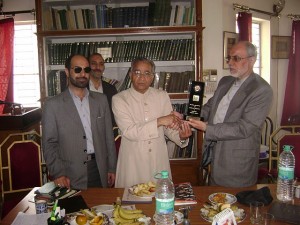
www.beruni.fan.uz www.muslimheritage.com
Ibn Sina Academy of Medieval Medicine and Sciences (IAMMS) (Urdu: ابن سینا اکا ڈ می آف میڈ یول میڈ یسین اینڈ سائنسیز) is one of the Indian NGOs, which is registered under the Indian Trusts Act, 1882. Mohammad Hamid Ansari, former vice-chancellor of Aligarh Muslim University, Aligarh, formally inaugurated it on April 21, 2001. Department of AYUSH, Ministry of Health and Family Welfare, Government of India gave accreditation to the academy in 2004 and promoted it as ‚centre of excellence‘ in 2008. Membership of the academy is open to anyone who has an interest in the academy’s activities particularly on history of medicine and history of science.The founder president is Hakim Syed Zillur Rahman. Read More: >HERE<
Unani Medicine or Yunani Medicine (pronounced /juːˈnɑːni/; YūnÄ�nÄ� in Arabic, Urdu, Bengali, Persian, Pashtu ) means „Greek“, also called „Unani-tibb“ is a form of traditional medicine widely practiced in India and Indian subcontinent. It refers to a tradition of Graeco-Arabic medicine, which is based on the teachings of Greek physician Hippocrates, and Roman physician Galen, and developed in to an elaborate medical System by Arab and Persian physicians, such as Rhazes, Avicenna (Ibn Sena), Al-Zahrawi , Ibn Nafis. Unani medicine is based around the concepts of the four humours: Phlegm (Balgham), Blood (Dam), Yellow bile (ṢafrÄ�‘) and Black bile (SaudÄ�‘). Read More: > HERE < The Unani Medicine is a traditional medicine and part of the trio Indian medicines – ayurveda, siddha and unani.
Ibnsina Academy of Medieval Medicine and Sciences – Abū AlÄ� al-Husayn ibn AbdullÄ�h ibn SÄ�nÄ� (Avicenna) is a well-known personality among the physicians of Unani medicine and scientists of physical sciences since medieval times. To commemorate and to institutionalize an academy named after him, Ibn Sina Academy of Medieval Medicine & Sciences, was founded on March 1, 2000. The Academy has been registered under Indian Trusts Act, 1882 on August 14, 2000. Mr. M. Hamid Ansari, Vice-chancellor of Aligarh Muslim University, Aligarh formally inaugurated it, on April 20, 2001. Department of AYUSH, Ministry of Health & Family Welfare, Govt. of India gave accreditation to the academy in 2004. The Academy is now a non-governmental, non-political and non-profit organization with multiple aims and objectives.
The Idea of the Formation of the Academy – There is a consensus amongst researchers of the history of medicine & sciences that early Arab, Muslim physicians and scientists had played a very important role in the development of natural and medical sciences during the renaissance of Islamic civilization, which spanned over eight centuries. This was achieved through translating earlier medical and scientific sources and developing then known sciences in the light of their clinical and scientific expertise.
Despite the above fact, it is well-known that the full potential of the Islamic medical and scientific particularly, heritage has not been investigated exhaustively to-date its basic role and importance in the development of modern medicine and its effect on the European Renaissance. Most of the manuscripts of Islamic medicine are lying unutilized on the shelves of private and some public libraries around the world and only few have been studied comprehensively. In the light of this, a number of physicians, scientists, scholars and historians are called for reviving this heritage on a national level. This is to be achieved through organization and teamwork.
And this is how the idea to found the Ibn Sina Academy of Medieval Medicine & Sciences (IAMMS) emerged. The first meeting of the Academy was held on March 5, 2000 in Aligarh (India) and was chaired by Professor (Hakim) Syed Zillur Rahman, president of IAMMS. A number of physicians and historians attended this meeting. The second meeting of the Academy was held on April 8, 2001 in Aligarh, when the By-Laws were discussed and approved.
It was also decided that Aligarh would be the permanent location of the Academy and it would operate as a normal registered trust as well. Membership of the society is open to everyone who has an interest in or would like to contribute by studying the History of Islamic Medicine and Sciences. The Academy looks forward to receiving support and help from all scholars and researchers in India and all over the world.
The Institute of Manuscripts of the Azerbaijan Academy of Sciences is a center for collecting, systematizing, storing and publishing medieval manuscripts. It currently includes about 40,000 documents including 11 000 manuscripts, in languages that include Azeri, Turkish, Uzbek, Persian and Arabic. These texts help us understand what Azerbaijanis from the Middle Ages thought about medicine, astronomy, mathematics, poetry, philosophy, law, history and geography.
The basis for the Institute was laid in 1924, when the first all-Azerbaijan Regional Congress was held in Baku. The Congress decided to organize a scientific library with a special department dedicated to ancient manuscripts and rare books. At first, this library was part of the Investigation Society of Azerbaijan; then it became attached to the Nizami Institute of Literature. In 1955 the Manuscript Department became the Independent Center of Scientific Research. Later, its name was changed to the Institute of Manuscripts.
Many of the ancient manuscripts found at the Institute came from the private collections of Azerbaijan’s most prominent 19th- and early 20th-century thinkers, including Abbasgulu agha Bakikhanov, Mirza Fatali Akhundov, Abdulgani Afandi Khalisagarizada, Husein Afandi Gaibov, Bahman Mirza Gajar and Mir Mohsun Navvab.
It continues to collect manuscripts, rare books and historical documents from all over Azerbaijan. The Institute is located in the former Alexandrian Russian Muslim Female Boarding School, which was built by Haji Zeynalabdin Taghiyev between 1898 and 1901. This was the first girl’s school in the Muslim East. The building was designed by Polish architect Joseph V. Goslavski (1865-1904), who also designed Baku’s City Hall and Taghiyev’s private residence, which now serves as the Taghiyev Museum housing the National History Museum collection.
In 1918, when Azerbaijan became independent, Taghiyev gave the building to the government of Azerbaijan to be used for ministers‘ offices. In 1920, after the Red Army invaded Azerbaijan, the Bolsheviks turned the building into the headquarters for the Worker, Peasant and Soldier Deputies. After that, it housed the Presidium of the Supreme Soviet of the Azerbaijan Republic (the governing body of Parliament). Since 1950, the building has housed what is now called the Institute of Manuscripts.
Medical Manuscripts – Among the carefully preserved books on natural sciences there are numerous sources on medicine and pharmacy in Oriental languages. The oldest of them dates back to the 9th century, the latest to the 20th. By the way, the Institute treasures one of the oldest hand-written copies of Canon of Medicine by great Ibn Sina (Avicenna) as well as other valuable works on medicine and pharmacy, including manuscripts of works by such medieval authors as Ali bin Abbas (10th century), Muwaffag al-Harawi (10th century), Isa ar-Ragi (10th century), Mahmud bin Ilyas (13th century), Yusif bin Ismail Khoyi (13-14th centuries), Zeyn al-Abidin Attar (15th century), Yusif bin Muhammad Harawi (15-16th centuries), Sultan Ali Khorasani (16th centurys), Sayyid Muhammad Mu’min (17th century), etc.
In order to find out the total number of manuscripts on medicine and pharmacy the funds and catalogs of the Institute have been examined by Prof. Farid Alakbarli. It has been revealed that the Institute’s collection includes 390 medieval manuscripts and 27 printed books on medicine and pharmacognosy written in the following languages: Persian – 222 manuscripts, Turkic (Old Azeri and Old Turkish) – 71 manuscripts, and Arabic – 70 manuscripts.
By the way, the Institute treasures one of the oldest hand-written copies of Canon of Medicine by great Ibn Sina (Avicenna) as well as other valuable works on medicine and pharmacy, including manuscripts of works by such medieval authors as Ali bin Abbas (10th century), Muwaffag al-Harawi (10th century), Isa ar-Ragi (…10th century), Mahmud bin Ilyas (13th century), Yusif bin Ismail Khoyi (13-14th centuries), Zeyn al-Abidin Attar (15th century), Yusif bin Muhammad Harawi (15-16th centuries), Sultan Ali Khorasani (16th centurys), Sayyid Muhammad Mu’min (17th century), etc.
A brief history of Islamic Medicine illustrating how advanced the Islamic World was compared to the West in the Middle Ages. / BBC – Islam and Science 3: The Power of Doubt 1/6 – العلم في الاسلام
The Abu Raihan Biruni Institute of Oriental Studies of the Academy of Science of the Republic of Uzbekistan was established in 1943 on the foundations of the Oriental Department of the Alishir Navai“i State Public Library. Until 1950 it was called the Institute for the Study of Oriental Manuscripts, and after 1950, considering the range of its scholarly directions, it was renamed the Oriental Studies Institute.
Materials in the collection include works written in Uzbek, Arabic, Persian, Tajik, Urdu, Pasto, Azeri, Ottoman Turkish, Tatar, Turkmen, Uighur and other languages. These materials encompass the fields of history, literature, philosophy, law, astronomy, physics, chemistry, medicine, pharmacology, language, geography, music, mathematics, mineralogy, agriculture, the figurative arts, and so on.
At the present time the manuscript collection contains 25,261 volumes. Many of them are miscellanies, where one codex contains diverse treatises. Thus there are far more treatises included in the collection than represented by the number of volumes alone. The Institute“s collection of lithographed and printed books amounts to about 39,300 volumes. They have important historical meaning for the study of history in Central Asia, its neighboring states “ Turkey, Iran, Afghanistan, Pakistan, India, China and Arab countries “ and also for the study of the political, economic, diplomatic and cultural links among them.
The collection has many manuscripts about the history of Islam, the Islamic sciences, and Sufism, written in Arabic, Persian, and old Uzbek and dating from the ninth to the nineteenth centuries. Among the manuscripts are early examples of the Qur“an, which date from the ninth century and employ the Kufic script. In addition, the collection holds rare copies of the Qur“an written at various times employing the Naskh script in artistic ways.
The Institute has a distinctive collection of archival documents that chronologically encompass a thousand-year period. The oldest document is from the tenth century, and the most recent is from the twentieth century. In particularly large quantity are documents compiled in the Bukharan, Khivan and Qoqand khanates. At the present time the Institute studies and publishes these documents.
- www.amu.ac.in Alligarh Muslim University
- Voices from the Ages – Baku’s Institute of Manuscripts <
- http://aligarhmovement.com/aligarians/hakim_zillur_rahman <
- Abu Raihan Biruni Institute of Oriental Studies <
- AVICENNA, UNANI MEDICINE & MATERIA MEDICA <
- ISLAMIC PLANT MEDICINE AND HISTORY <
- IRCICA – Muslim Calligraphy, Heritage <
- ACCESS TO MEDICINE´s PROJECT:
- http://en.wikipedia.org/wiki/Science_in_medieval_Islam
- www.essentialaction.org/access/ , http://standagainstpoverty.org/
- Meet AVICENNA, studies, friends, fans at fb <
- Meet KARKHANA ZINDA TILISMATH, Unani Medicine, friends, studies at fb <
- Meet Islamic Medicine “The Cure for Every Disease”, studies, friends at fb <
- Meet UNESCO World Heritage, friends, fans at fb <
- Meet the Oakland Institute, friends, fans, at fb <
- Meet International Year of Biodiversity, friends, herbal fans at fb <
- Meet United Nations Millennium Campaign, friends, fans at fb <
Acacia Senegal – Sudan’s Miracle Commodity
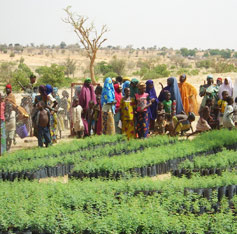
UNHCR – The UN Refugee Agency
http://notonourwatchproject.org/
http://www.fao.org/acacia senegal
Darfur (Arabic: دار فور dÄ�r fūr, lit. „realm of the Fur„) is a region in Sudan. An independent sultanate for several hundred years, it was incorporated into Sudan by Anglo-Egyptian forces. The region is divided into three federal states: West Darfur, South Darfur, and North Darfur which are coordinated by a Transitional Darfur Regional Authority. Because of the War in Darfur waged by the Sudanese government against the non-Arab indigenous population, the region has been in state of humanitarian emergency since 2003. Read more: > HERE <
CASH CROP – The term is used to differentiate from subsistence crops, which are those fed to the producer’s own livestock or grown as food for the producer’s family. In earlier times cash crops were usually only a small (but vital) part of a farm’s total yield, while today, especially in the developed countries, almost all crops are mainly grown for cash. In non-developed nations, cash crops are usually crops which attract demand in more developed nations, and hence have some export value. In many tropical and subtropical areas, jute, coffee, cocoa, sugar cane, bananas, oranges and cotton are common cash crops. In cooler areas, grain crops, oil-yielding crops and some vegetables and herbs are predominate; an example of this is the United States, where cannabis, corn, wheat, soybean are the predominant cash crops. Read more: > HERE <
Not since baking soda has there been a natural commodity that has so many different uses. In the days of the Egyptian Pharaohs, gum arabic was essential to mummification, and since Biblical times, it has been used to maintain the integrity of paints.It can also soothe a worried belly, diarrhea, and constipation, and it’s a key ingredient in soft drinks.
Gum arabic is sap from the branches of Acacia Senegal trees. It’s a natural emulsifier, which means that it can keep together substances which normally would not mix well. Pharmaceutical companies use it to keep medicines from separating into their different ingredients, and a dab of gum arabic makes newspaper ink more cohesive and permanent.
Sudan’s Miracle Commodity – The Acacia Senegal tree grows all over Africa and even on the Indian subcontinent. Most of the world’s gum arabic, however, comes from Sudan, where a thick belt of Acacia Senegal trees stretches from one end of Sudan to the other. Hassan Osman Abdel Nour is the general manager of Sudan’s largest exporter of gum arabic, the Gum Arabic Company.
„The botanist who identified Acacia Senegal first saw it in Senegal, but it turned out to be Acacia Senegal is more common in Sudan than anywhere in the belt. . . It’s an endowment from God. We did nothing about it,“ Nour says.
But extracting gum arabic from thorn-covered Acacia Senegal trees is not easy. When the amber-colored gum begins bubbling up, farm workers handpick chunks from the trees and sometimes get scratched in the process.
Still, Sudan reportedly exports tens of thousands of tons of raw gum arabic ( 60 – 70 % of the World Market) each year, feeding the high global demand. The raw sap is sent to Europe for processing and afterward is disseminated to customers worldwide.
An Industry in Decline – These days, however, business is down. Sudan’s output has dropped to nearly half of what the nation produced in its heyday. As the once abundant belt of Acacia Senegal trees across Sudan shrinks, climate change appears to be one of the culprits. Farmer Adil Basheer remembers better harvests. „In the 1990s—’e’re talking about hectares—one hectare was equivalent to seven and eight bags every two weeks. But nowadays, a hectare cannot bring a half bag or two and a half b“gs.“
The humanitarian crisis in Darfur, where more than 200,000 people have died and more than two million have been displaced, is also having a negative impact on the global gum arabic industry.
The Bush administration calls the conflict „government-sponsored genocide,“ and around the world, the Darfur crisis appears to have sullied Sudan’s reputation to that point that many companies do not want to admit that they buy a Sudanese commodity.
Coca-Cola, which uses gum arabic to keep the sugar from precipitating to the bottom of its sodas, won’t say where it gets the emulsifier. However, company representatives insist they do not buy directly from Sudan. Gum Arabic Company board president Mansour Khalid says otherwise. „They buy processed gum and the processed gum comes from Europe, and Europe buys from Sudan. And you know, the whole thing is silly.“ Staying Afloat – Some Sudanese businessmen believe that widening gum arabic’s appeal internationally is the way forward. Isam Siddiq runs the privately-owned Dar Savannah Gum Arabic processing company. He says manufacturers around the world are trying to create manmade emulsifiers as powerful as gum arabic. Siddiq wants to maintain Sudan’s competitive edge by altering the high-fiber, nonfat emulsifier’s identity from an additive to a food, and he’s ready with his sales pitch:
„America is aware of good health and good food. The American people. And they want it—fiber…The people of the world must really complement each other. We have here fiber, and they have their wheat in America. So Sudan and American could be a good partnership for the benefit of the two nation“. > Related NPR Stories <

http://en.wikipedia.org/wiki/George_clooney Not On Our Watch: Official site for charity founded by George Clooney, Brad Pitt, Matt Damon, Don Cheadle, Jerry Weintraub, David Pressman
ECONOMY – In the last ten years, the Sudanese economy has undergone a drastic change. Instead of been an agriculture-based economy it has turned into an OIL DEPENDEND ECONOMY which in turn has marginalized agriculture. At a time when the world is suffering a food crisis, which is especially afflicting Africa, food production should offer the main productive future for the Sudanese economy.
During the last year, oil revenues represented more than 65% of the Government of National Unity income and more the 90% of the revenue for the Government of South Sudan. In the last four months, oil prices have dropped by around 70%. This is a huge blow. Meanwhile, others sectors of the economy have been weakened by a combination of poor policies followed by the regime in the in the 1990s, and the failure to adapt the non-oil sectors to the impact of the growth in petroleum production. Most of the agricultural sector has been neglected and the economy is now driven by the trading sector and the informal sector, which do not contribute in a major way to creating jobs or generating income in the shape of direct or indirect taxes.
The Sudanese people are still waiting for the peace dividends in shape of economic development which will help in alleviating poverty and raising the standard of living to the majority. At the time when market economy has been tested to the limit in western countries and governments are now nationalizing banks and taking control of key economic sectors, the opposite is happening in Sudan. Instead we have a market dominated by a number of monopolies in most economic sectors, controlled by private individuals who are well-connected to the government. It is not the state that regulates the country’s leading businessmen but a cosy partnership between the two. Read More: > HERE <
The issues of the Darfur war are economical. One of them is due to rice a produce. Farmers fear the construction of dams which are made possible by the strength of the River Nile Waters.
There are places in the world that you can hardly forget like Uganda. This last country is in East Africa and has no opening on the Ocean. So, this makes it a landlocked country that needs to negociate with other countries like Kenya, Tanzania, Somalia and Eritrea to import goods by boat and there is the river Nile on which boats can sail from Cairo. Uganda is a very known country these days because of the conflit in Sudan.
This conflit is known as the Darfur war. Sudan is in the south of Egypte and that is where most of the rice plantation are. Probably thank to the river Nile rice is available in large quantities and it constitutes the major dish of the inhabitants in West Africa. The problem with rice is that it needs to be eaten reasonable other wise you gain weight which is difficult to loose especially if you don’t do a lot of activities.
Rice is a major issue. That is all the question of construction of dams which have said to be destructive for plantation. Rice is sometimes transformed into an alchoolic beverage called sake and it is a produce from Japan. So, one may think that it is important to regulate to make sure that nobody get drunk and is treated in case of fetal alchool syndrom. Actually, the population growth in Japan slowed down in the nineties. Rice grows in water and in the mountains. The well known varieties of rice are from the United States of America and France. Rice is grown in the South of the United States of America in the states of North Carolina and South Carolina. France grows rice on its south west border with Spain a place called Camargue where horses run freely.
Thus, the war in the Darfur is an economical and social problem. Rice is a cereal and can accompany many meals.
If the war continues in the Darfur there will be a food security issue. There is a need to control the cereal markets because they can often be stocked for a long time without preservatives and then some other ingredients can be neglected. This is a tragedy that happened everywhere in the world where populations thought that cereals when in large amount are able to cover all the food intake. It is good to know that there is some for eating and that all is not wasted in alchoolic beverages that can put society in danger because of risk of accidents for example and of wars. Read more in > International Business and Trade <
www.un.org/esa/socdev/unpfii/ The UN Permanent Forum on Indigenous Issues is an advisory body to the Economic and Social Council, with a mandate to discuss indigenous issues related to economic and social development, culture, the environment, education, health and human rights.
www.ethicalconsumer.org – Ethical consumption stresses the role of the consumer in preventing the exploitation of women and children in sweatshop factories overseas and in the U.S. It also considers the environmental costs of production. These costs include the depletion of natural resources, as well as human costs. For example, when a corporation like Unilever, producer of Dove and Lever soaps, Vaseline Intensive Care lotion, Finesse shanpoo, Surf detergent, and Mentadent toothpaste, employs women in the jungle areas of Bihar, India to collect seeds from the sal tree for use in lipstick, the women are deprived of control over what was formerly a resource for their own use.
Consumption in North America today will eventually destroy the environment and is in general hazardous to human health. According to the 1998 United Nations Development Report, 20% of the world’s population consumes 86% of the world’s resources, while the poorest 20% consume only 1.3%. „Not everyone has been invited to the party,“ said U.N. administrator James Gustave. „Expectations have gone global but affluence has not.“
Obviously, consuming less on a personal level in the United States does not directly ensure that people in other parts of the world will immediately be able to meet their basic needs. Changing social patterns of consumption, however, will eventually make a difference. Once individuals begin to understand how their purchases are connected within a global framework, they can demand new, sustainable methods of production. Living with fewer „things“ and assuring that all resources, including labor, are used wisely and fairly will help create a more equitable and ecological world.
By consuming consciously and ethically we can realistically create change. Being aware of current issues in labor exploitation, environmental conservation, and human rights is the best way to spend ethically. Before buying anything ask: Who makes it? Who needs it? and Who profits from it? > Here are some links to informational sites <
- www.radioafrika.net
- www.compassionineconomics.org
- CLIMATE REFUGEE´s http://en.wikipedia.org/wiki/Environmental_migrant
- GUM ACACIA MARKET REPORT: www.agrigum.com
- NY Times Mail Archive: A Tree that supports Sudan´s War by business leaders <
- GOMME SIRUP („junk sweets“) www.amountainofcrushedice.com <
- www.newcrops.uq.edu.au/listing/species_pages_A/Acacia_senegal.htm <
- UN www.fao.org/acacia senegal
- Meet Mind & Life, Compassion in Economics, studies, friends, at fb <
- Meet Human Rights Watch, friends, fans at fb <
- Meet Natural News (independent health news) studies, friends at fb <
- Meet Survival International, friends, fans at fb <
- Meet NO MORE OIL RIGS we want ALTERNATIVE ENERGY SOURCES NOW at fb <
- Meet FAIR TRADE, friends, fans at fb < & www.ethicalconsumer.org
- Meet Peace, Paix, 和平, Salam, Shalom, Pace, Mir, Friede, Paz, Shanti, Heiwa <
UYGHUR – Trad. Medicine, Arts & Culture
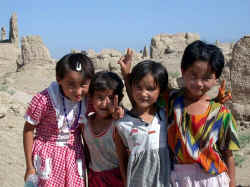
www.unpo.org/Uyghuren Nederland (VUN)
http://turkmenfriendship.blogspot.com
The Uyghur (Uyghur: ئۇيغۇر, Uyghur?; simplified Chinese: 维吾尔; traditional Chinese: 維吾爾; pinyin: Wéiwú’Ä�r; are a Turkic ethnic group living in Eastern and Central Asia. Today Uyghurs live primarily in the Xinjiang Uyghur Autonomous Region in the People’s Republic of China. An estimated 80 % of Xinjiang’s Uyghurs live in the southwestern portion of the region, the Tarim Basin. Large diasporic communities of Uyghurs exist in the Central Asian countries of Kazakhstan, Kyrgyzstan, and Uzbekistan. Smaller communities are found in Mongolia, Pakistan, Afghanistan, Turkey, Russia and Taoyuan County of Hunan province in south-central Mainland China. Uyghur neighborhoods can be found in major cities like Beijing, Shanghai, Sydney, Washington D.C, Munich, Tokyo, Toronto, Istanbul. Read More: > HERE <
Erkin Alptekin (born on July 4, 1939 in East Turkistan) is a noted international advocate for the rights of native and indigenous people. Among the organizations he has led are the Unrepresented Nations and Peoples Organization, of which he was formerly the chairman, and the World Uyghur Congress, of which he was the first president. Read More: > HERE <
Erkin Alptekin is one of the foremost human rights advocates for the Uighur people of Eastern Turkestan, also known as the Xinjiang Autonomous Region of the People’s Republic of China. Mr. Alptekin was employed by Radio Free Europe/Radio Liberty from 1971 to 1994. He is one of the founders of the Unrepresented Nations and People’s Organization (UNPO), and currently serves as its General Secretary. www.dalailamafoundation.org
Uyghur Medicine – The Uyghurs had an extensive knowledge of medicine and medical practice. Sung (Song) Dynasty (906-960) sources indicate that an Uyghur physician, Nanto, traveled to China, and brought with him many kinds of medicine not known to the Chinese.
There are 103 different herbs for use in Uyghur medicine recorded in a medical compendium completed by Li Shizen (1518-1593), a chinese medical authority. The Tartar scholar Rashit Rahmeti Arat has written two valuable books in German entitled Zur Heilkunde der Uighuren (Medical Practices of the Uygurs) , in 1930 and 1932, relying on Uyghur documents discovered in East Turkestan. In his book, Arat gives important information on Uyghur medicine and medical treatment.
Among other documents he studied he found a very important sketch of a man with an explanation of acupuncture. Relying on this document, some western scholars claim that acupuncture was not a Chinese, but a Central Asian invention and the Uyghurs perfected the method. Traditional Uyghur medicine, which can be traced back for more than 2,700 years through written records, is still very popular in East Turkestan today.
Tibetan Buddhist Medicine/Ancient Uyghur Civilization
Medicine – Tatar scholar, professor Reşit Rahmeti Arat in Zur Heilkunde der Uighuren (Medical Practices of the Uyghurs) published in 1930 and 1932, in Berlin, discussed Uyghur medicine. Relying on a sketch of a man with an explanation of acupuncture, he and some Western scholars suspect that acupuncture was not a Chinese, but an Uyghur discovery. Today, traditional Uyghur medicine can still be found at street stands. Similar to other traditional medicine, diagnosis is usually made through checking the pulse, symptoms, and disease history, and then the pharmacist pounds up different dried herbs, making personalized medicines according to the prescription. Modern Uyghur medical hospitals adopted the Western medical science and medicine and adopted Western pharmaceutical technology to discover new and produce traditional medicines.
- www.unpo.org , UNESCO – World Heritage
- Articles on Traditional Chinese Medicine <
- Articles on Traditional Tibetan Medicine <
- Gesellschaft für bedrohte Völker (GfbV), friends at fb <
- Meet STOP China’s GENOCIDE on the Uighur people, friends at fb <
- Meet EAST TURKESTAN UYGHURESTAN, friends, fans at fb <
- Meet Human Rights Watch, friends, fans at fb <
- Council for a Parliament of the World’s Religions (CPWR) at fb <
- The International Ecotourism Society (TIES)at fb <
Native American Med. (North-South)
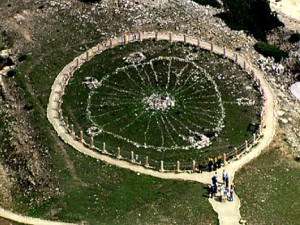
www.native-americans-online.com
http://rainforests.mongabay.com/medicine
The indigenous peoples of the Americas are the pre-Columbian inhabitants of North, Central, and South America, their descendants, and many ethnic groups who identify with those peoples. They are often also referred to as Native Americans, Aboriginals, First Nations and by Christopher Columbus‘ geographical and historical mistake, Indians, now disambiguated as the American Indian race, American Indians, Amerindians, Amerinds, or Red Indians. According to the New World migration model, a migration of humans from Eurasia to the Americas took place via Beringia, a land bridge which connected the two continents across what is now the Bering Strait. The most recent point at which this migration could have taken place is c. 12,000 years ago, with the earliest period remaining a matter of some unresolved contention. These early Paleo-Indians soon spread throughout the Americas, diversifying into many hundreds of culturally distinct nations and tribes. According to the oral histories of many of the indigenous peoples of the Americas, they have been living there since their genesis, described by a wide range of traditional creation accounts. SEE NATIVE AMERICANS may be refering to: > HERE <
Traditional medicine (also known as indigenous or folk medicine) comprises medical knowledge systems that developed over generations within various societies before the era of modern medicine. Practices known as traditional medicines include herbal, Ayurveda, Siddha medicine, Unani, ancient Iranian medicine, Islamic medicine, traditional Chinese medicine, acupuncture, Muti, Ifá, traditional African medicine, and other medical knowledge and practices all over the globe. The World Health Organization (WHO) defines traditional medicine as: „the health practices, approaches, knowledge and beliefs incorporating plant, animal and mineral-based medicines, spiritual therapies, manual techniques and exercises, applied singularly or in combination to treat, diagnose and prevent illnesses or maintain well-being.“ Read More: > HERE <
The healing traditions of Native Americans have been practiced in North America since at least 12,000 years ago and possibly as early as 40,000 years ago. Although the term Native American medicine implies that there is a standard system of healing, there are approximately 500 nations of indigenous people in North America, each representing a diverse wealth of healing knowledge, rituals, and ceremonies.
Many aspects of Native American healing have been kept secret and are not written down. The traditions are passed down by word of mouth from elders, from the spirits in vision quests, and through initiation. It is believed that sharing healing knowledge too readily or casually will weaken the spiritual power of the medicine.
Native American medicine is based upon a spiritual view of life. A healthy person is someone who has a sense of purpose and follows the guidance of the Great Spirit. This guidance is written upon the heart of every person. To be healthy, a person must be committed to a path of beauty, harmony, and balance. Gratitude, respect, and generosity are also considered to be essential for a healthy life. Ken Cohen writes, „Health means restoring the body, mind, and spirit to balance and wholeness: the balance of life energy in the body; the balance of ethical, reasonable, and just behavior; balanced relations within family and community; and harmonious relationships with nature.“ Read More: > HERE <
The meaning of the term medicine to an American Indian is quite different from that which is ordinarily held by modern societies. To most American Indians, medicine signifies an array of ideas and concepts rather than remedies and treatment alone. There is no separation between religion and medicine in tribal culture and healing ceremonies are an integral part of the community experience. To the American Indian, the natural or correct state of all things, including man, is harmony. Far from being dominant over nature, man is seen as interdependent with other living beings and physical forces. All thinking is grounded in relationships. More emphasis is given to the connectedness of one thing to another than to the individual thing itself. To maintain a correct or natural relationship is to be in harmony. The universe is a complex matrix of interdependence. There is a proper set of relationships for each being, a proper existing in harmony with the universe. Read More: > HERE <
- Articles on Traditional & Native Medicine <
- WHO – Traditional Medicine <
- Commercialization of traditional medicines/BioPiraterie <
- DEVELOPMENT & THE HEALTH OF TRIBAL PEOPLE <
- UMN Native American Medicine Gardens, friends, fans at fb <
- Meet Survival International, friends, fans, at fb <
- Meet Indigenous Peoples Issues and Resources, friends at fb <
- Meet The International Ecotourism Society (TIES) at fb <
